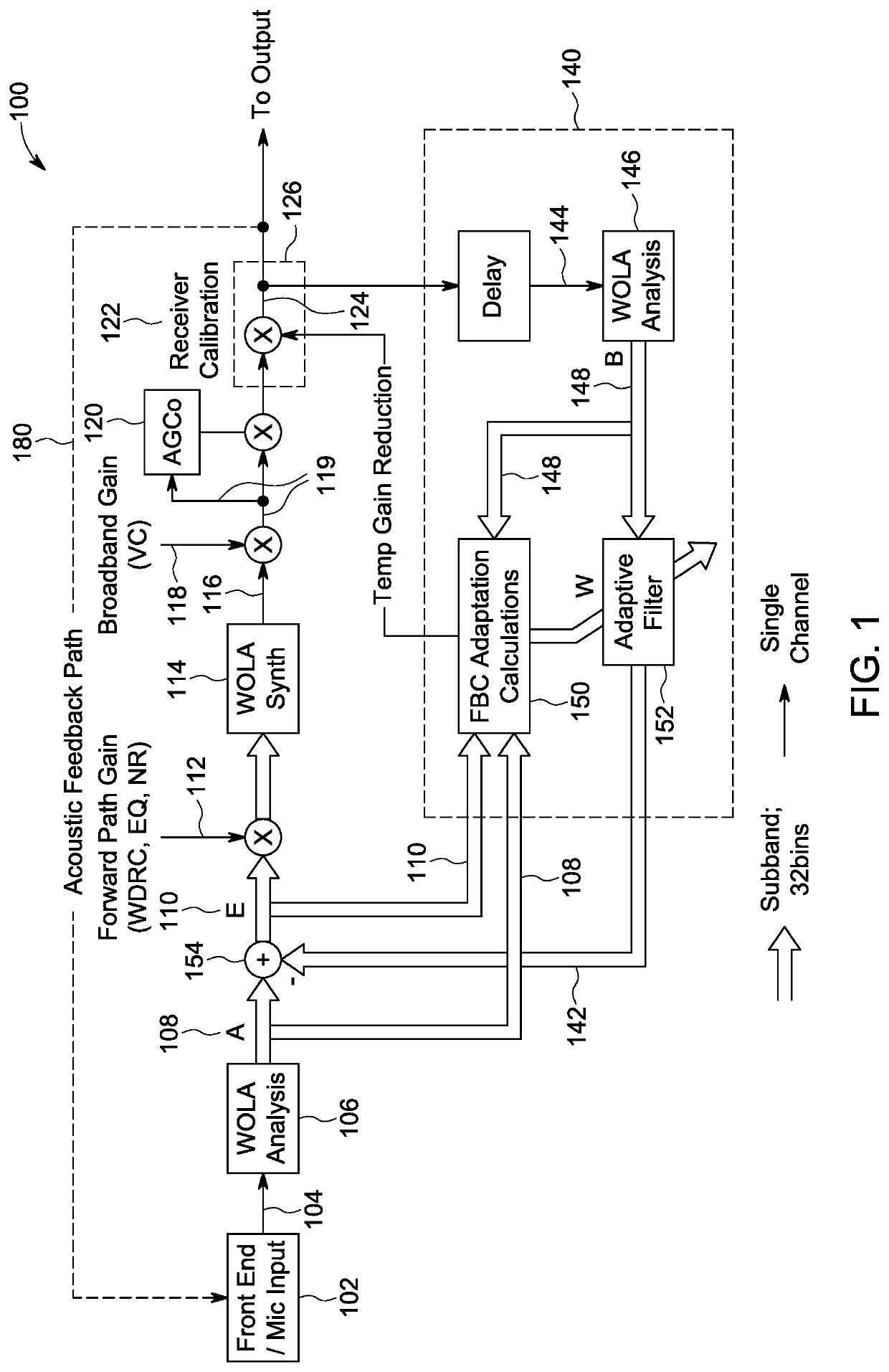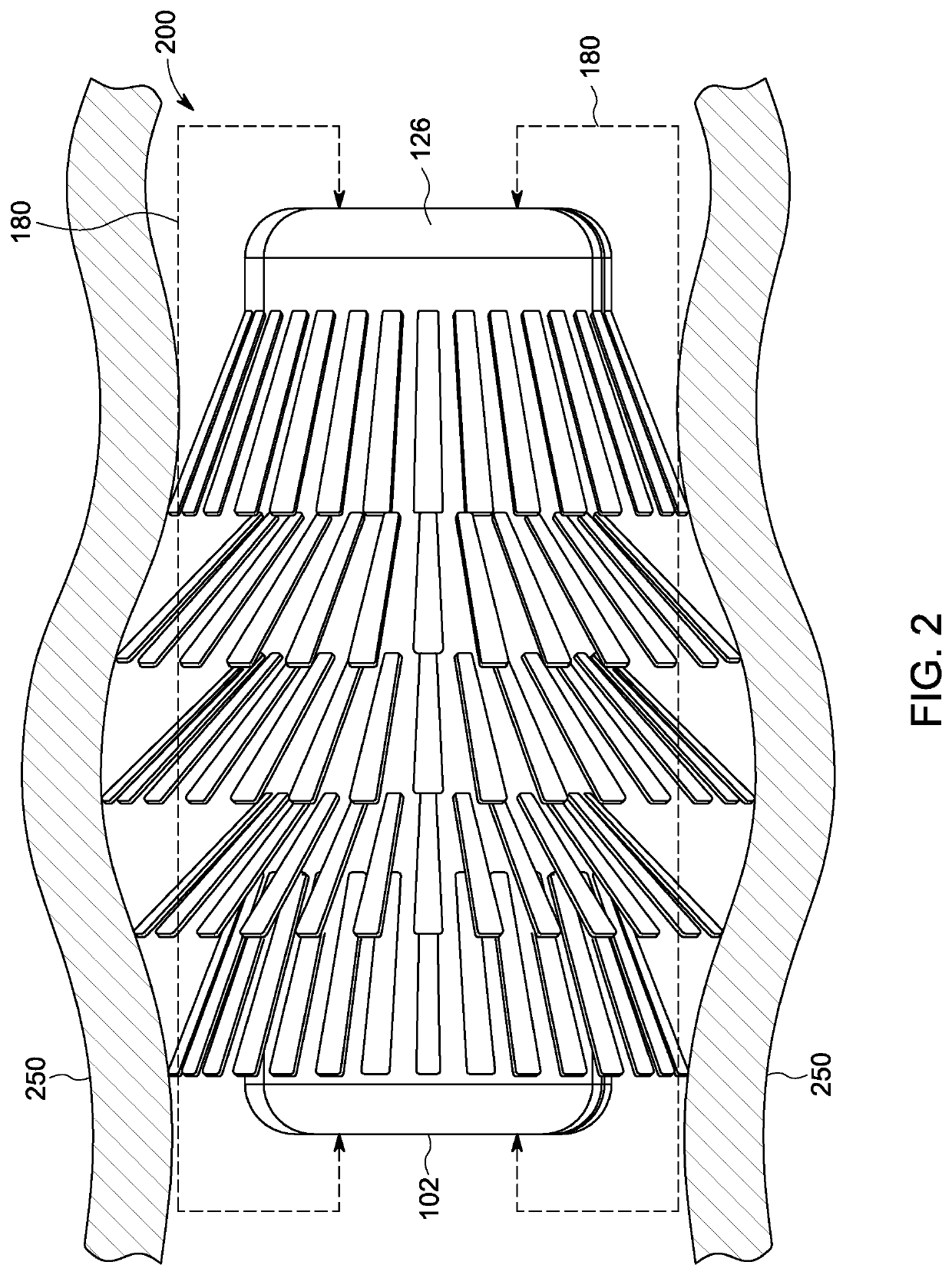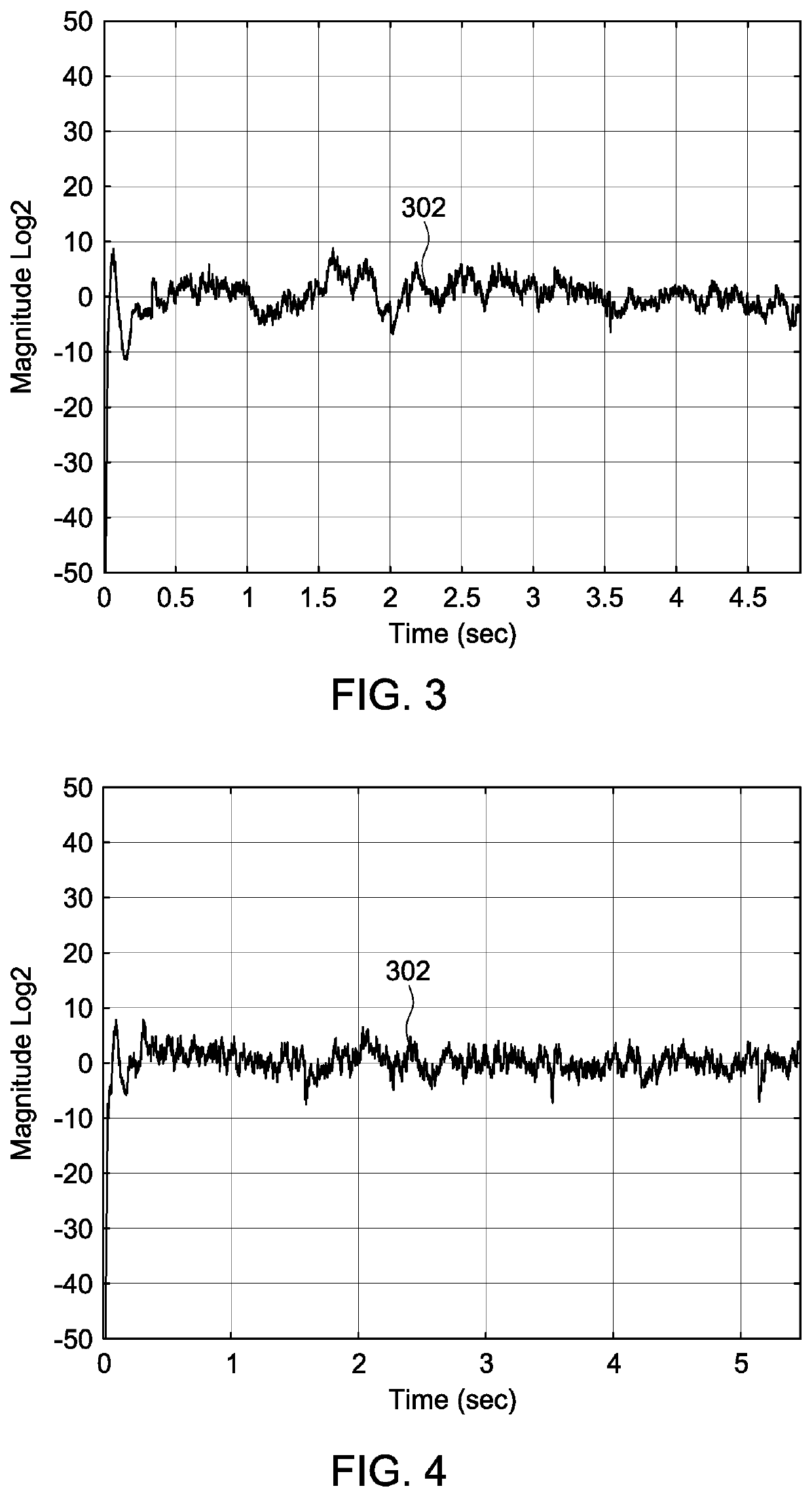Detection of feedback path change
a feedback path and detection technology, applied in the field of detection of feedback path change, can solve the problems of significant contamination of desired audio input signal, biased estimation of acoustic feedback path (provided by adaptive filter), and audible feedback
- Summary
- Abstract
- Description
- Claims
- Application Information
AI Technical Summary
Benefits of technology
Problems solved by technology
Method used
Image
Examples
example 1
[0139]FIG. 3 plots the magnitude of the BEAll metric against time, in seconds. BeAll(n) is labeled as reference numeral 302. In this example, the value of BEAll never equaled or exceed the value of BEThresh (BEThresh was set to a log2 value of +16.0 in this example, as well as in the examples referencing FIGS. 4-8) and therefore feedback path change was not detected and μ(n) was maintained at the slow rate over the entire 5 second duration of this example. The value of β used for calculating BESmooth was 2−3, and the value of γ used for calculating BESlow was 2−13 for this example and the examples referencing FIGS. 4-8. Example 1 shown in FIG. 3 used music as input. The music inputted was a new age piano solo title “Joy”, by George Winston, which includes multiple segments of single notes, i.e., pure tones. The maximum value of the signal was down −23 dB from full scale. FIG. 3 shows that the metric 302 stays well below the threshold value of +16.0 throughout the duration of the exp...
example 2
[0140]FIG. 4 shows the BEAll metric 302 in a simulation where the signal analyzed is human speech. After the start-up period (e.g. from zero up to about 1.5 seconds) has passed to allow for settling of the metrics, it can be observed in FIG. 4 that the value of BEAll metric 302 never equals or exceeds the BEThresh value of +16.0, therefore feedback path change is not detected and the slow rate for μ(n) was maintained throughout the duration of this experiment. Thus, the metric 302 is able to distinguish the tonal parts of human speech from feedback and the tonal parts of the speech do not cause the metric 302 to equal or exceed the threshold value.
example 3
[0141]FIG. 5 shows the BEAll metric 302 in a simulation where the signals analyzed are the sounds made by “clicking” a retractable ball point pen when the pen is actuated to repeatedly extend and retract the ball point of the pen. The impulsive sounds produced by the pen clicks are shown by the downward spikes 312 in the plot. The downward spikes 312 resulting from the clicks are correctly interpreted and are not identified as feedback path change, as only positive values greater than or equal to the threshold value (+16.0 in this example) are recognized as feedback path change. Therefore the slow rate for μ(n) was maintained throughout the duration of this experiment, since the metric 302 never equals or exceed the threshold value.
PUM
 Login to View More
Login to View More Abstract
Description
Claims
Application Information
 Login to View More
Login to View More - R&D
- Intellectual Property
- Life Sciences
- Materials
- Tech Scout
- Unparalleled Data Quality
- Higher Quality Content
- 60% Fewer Hallucinations
Browse by: Latest US Patents, China's latest patents, Technical Efficacy Thesaurus, Application Domain, Technology Topic, Popular Technical Reports.
© 2025 PatSnap. All rights reserved.Legal|Privacy policy|Modern Slavery Act Transparency Statement|Sitemap|About US| Contact US: help@patsnap.com



